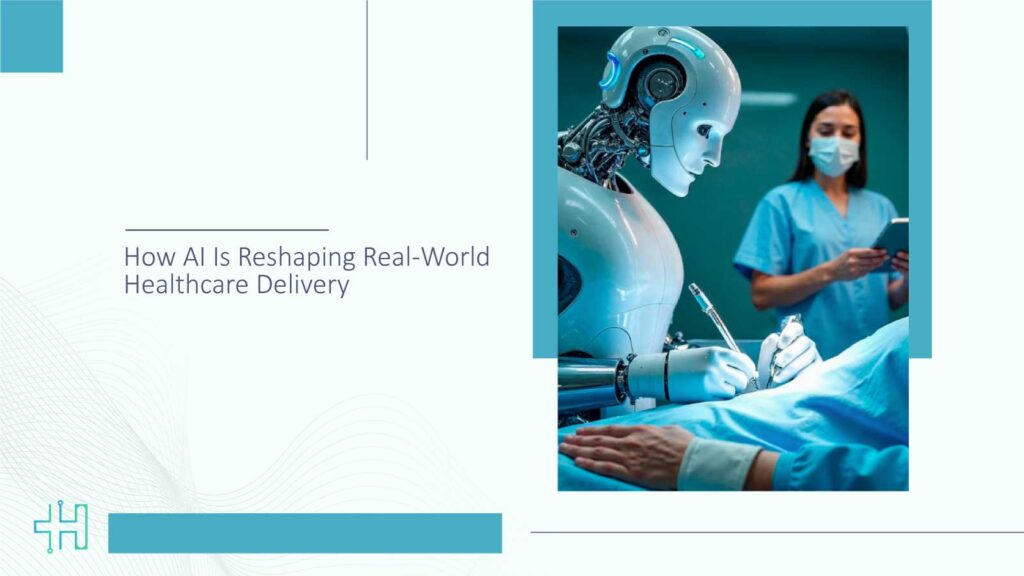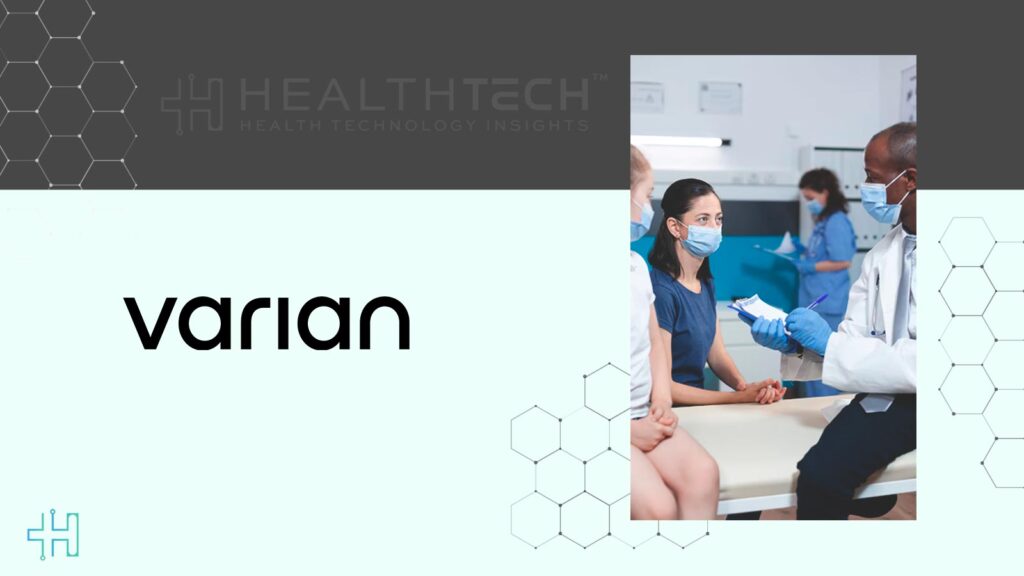Medical care is no longer limited to what occurs in the confines of a hospital. Through clinics, homes, and even on individual devices, artificial intelligence is gradually emerging as a companion in care.
Here’s how AI is changing actual-world healthcare delivery, albeit not through promises of tomorrow, but rather by meeting the pressing needs of patients, doctors, and health systems.
From accelerating diagnoses to reducing clinician workload and extending access to rural communities, AI is weaving itself into the very fabric of care. In the following pages, we’ll explore practical examples, industry insights, and emerging innovations that show how technology is strengthening both outcomes and empathy.
From Algorithms to Human Touch
Healthcare AI is strongest when it supplements the human touch instead of substituting it. In a top U.S. hospital, predictive models now identify potential sepsis symptoms almost ten hours earlier than human reviews.
Doctors say the saved time enables them to respond more quickly and consult with families more meaningfully. This is an evident example of how AI is transforming actual healthcare practice in ways that seem immediate and profoundly human.
Smarter Diagnostics, Sooner Answers
One of the most stressful parts of healthcare can be waiting for results. AI-based diagnostic aids are changing that. Radiology departments, for instance, are employing AI to help interpret images, cutting the number of false negatives in chest X-rays by as much as 30%.
These systems don’t displace radiologists but allow them time to connect with patients, explaining results, responding to questions, and concentrating on next steps in treatment.
Personalized Treatment Plans with Accuracy and Empathy
Each patient’s path is one of a kind, and AI is making care more individualized than ever. Through the analysis of genetics, lifestyle, and medical history, AI systems can personalize treatment plans with unprecedented precision. One new effort in pediatric oncology employed AI modeling to dynamically optimize chemotherapy dosages in real time.
The outcome: 25% fewer toxic side effects [link: health system report]. Behind those statistics are kids who had fewer painful experiences and families that experienced greater comfort in the process of care.
Remote Monitoring That Extends Care Beyond Walls
For chronically ill patients, AI-powered wearables and remote monitoring devices are transforming daily life. A pilot heart failure program showed a 40% decline in readmissions when it added AI-driven alerts that alerted clinicians to slight variations in patient vitals.
For the clinician, it means fewer hospital trips and more peace of mind. For the clinician, it ensures delivering ongoing care, even remotely.
Operational Efficiency That Benefits Everyone
As patient outcomes are in focus, operational effectiveness is where AI usually brings quicker ROI. From staffing and scheduling optimization to smart appointment reminders, AI is minimizing friction in healthcare delivery.
An American outpatient clinic saw a 50% reduction in no-shows after implementing an AI-based scheduling system. Staff were less stressed, and patients felt more supported, a testament that efficiency and compassion can harmonize.
Ethical AI: Embedding Trust in Technology
Trust is still the foundation of healthcare. With increasing integration of AI, transparency and fairness are now top concerns for leaders. A recent multi-center study demonstrated that an AI diagnosis tool performed equally well with varied populations, by age, gender, and ethnicity. This advancement is critical to ensuring AI does not perpetuate disparities but, rather, supports fair care for everyone.
The Next Chapter of AI in Healthcare
The horizon is broad, and opportunities are compounding:
- Community outreach with AI: AI-powered triage in mobile clinics to reach underserved areas.
- Conversational agents: Voice-enabled tools assisting older patients with medication reminders and instructions
- Global collaboration: Shared AI platforms for instant diagnosis of disease in low-resource settings.
Each of these breakthroughs indicates a future in which the way AI is transforming real-world healthcare delivery is not to replace clinicians but to enable them.
The potential comes in responsibly crafting these tools so that they further what matters most to patients and providers: trust, access, and compassion.
Embracing AI for a Healthier Tomorrow Today
The future of health care is not coming tomorrow; it is happening now. Artificial intelligence is redefining the way care is being delivered, improving accuracy, easing burden, and taking services far beyond hospital boundaries. But the most transformative effect is not technological. It is human.
AI allows clinicians to be at the bedside more of the time, enables patients to feel cared for throughout their journey, and helps health systems function with more focus and purpose. For leaders, innovators, and patients, the message is one of hope: this is a chance to create a smarter, kinder, more human healthcare system.
FAQs
1. How is AI transforming the pace of medical diagnoses?
AI can rapidly scan medical images and patient information and flag areas of interest to doctors. This speeds up diagnosis without sacrificing decisions to machines.
2. Is AI safe for treatment planning?
When well tested and audited, AI solutions deliver secure, precise recommendations. Bias and transparency reviews are increasingly done by health systems before deployment.
3. Will AI make doctors or nurses less important?
No. AI replaces tasks that are time-consuming and routine so clinicians can treat more patients. It reinforces the provider-patient relationship rather than weakening it.
4. How does AI assist patients in rural or remote locations?
With remote monitoring and mobile diagnostics, AI brings high-end care to underserved populations, cutting delays and enhancing access.
5. Before implementing AI, what should healthcare leaders keep in mind?
Leaders need to think about AI applications that increase fairness, transparency, and patient experience. Implementation is best when technology supports empathy in addition to efficiency.
Dive deeper into the future of healthcare.
Keep reading on Health Technology Insights.
To participate in our interviews, please write to our HealthTech Media Room at sudipto@intentamplify.com





